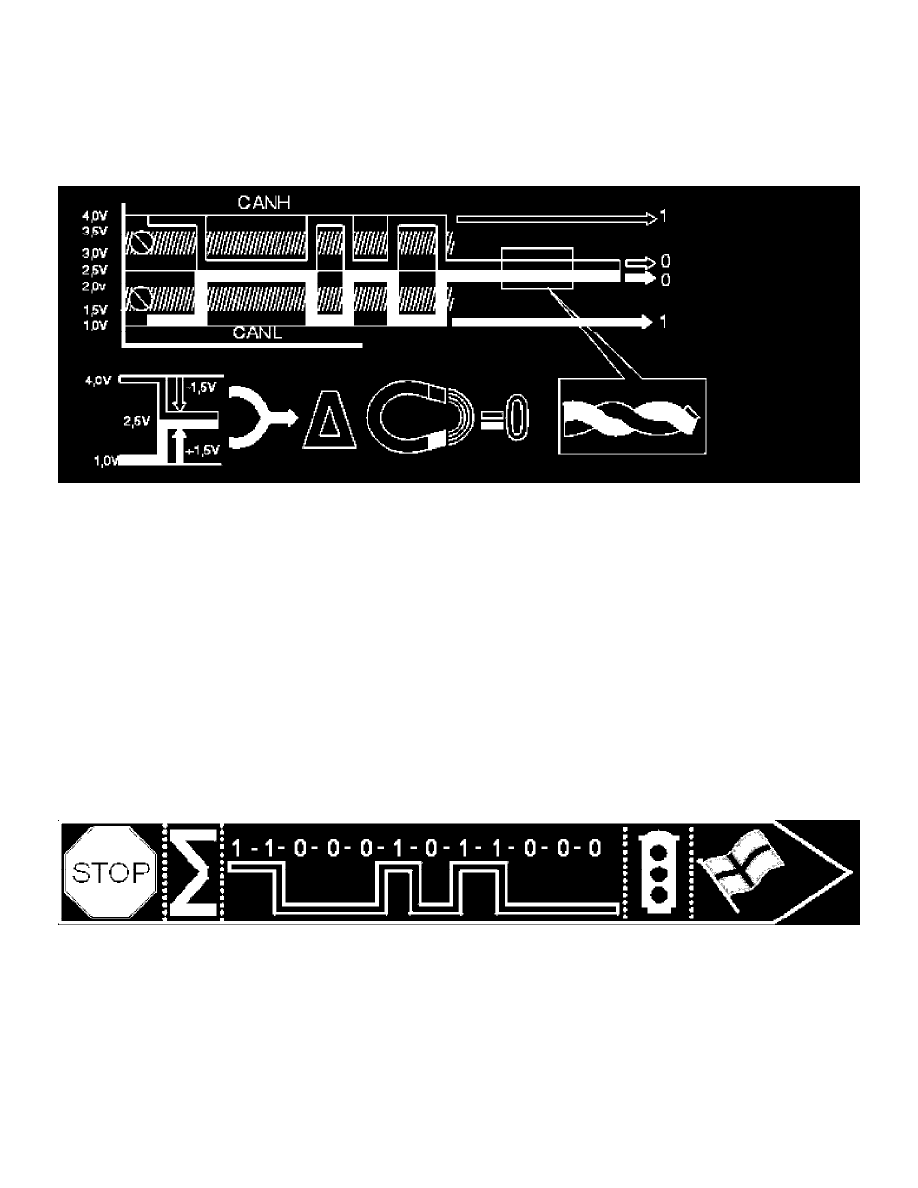V70 2.4 L5-2.4L VIN 61 B5244S (2001)

The standard for Control area network (CAN) specifies:
-
That two cables should be used (CAN H and CAN L)
-
Which voltage levels should be used
-
What a message should look like
-
How transfer errors should be handled.
Cables, CAN H and CAN L
The CAN H and CAN L cables must not be confused with HS CAN and LS CAN which are speeds on the Controller area network. CAN H and CAN L
are a way of distributing signals within the multiplex communication network.
Communication occurs through two cables. These two cables are paired together. CAN H is always white and CAN L is always green.
The cables are made of copper and are easily identified by the green and white coloring.
The voltage levels for communication occur using differential voltage levels.
The reason for communicating using paired cables and differential voltage levels is that the network becomes less sensitive to interference.
The same message is transferred simultaneously by both cables, but different voltage levels are used.
-
Binary 0 = 2.5V both on CAN H and CAN L
-
Binary 1 = 4V on CAN H and 1V CAN L.
Average voltage level is 2.5V.
Controller area network (CAN) message
The message consists of the following components:
-
Identifier ("flag"), which indicates the message identity and prioritization
-
Data information (value, information etc.)
-
Check sum, used to check that the message has arrived correctly
-
Stop signal, which indicates that the message has finished.
A complete Controller area message is called a frame.
Prioritizing
Conflicts can occur in a network when several control modules wish to send a message at the same time. For example when the driver presses the brake
pedal at the same time as the passenger changes the climate control settings and a passenger in the rear seat opens the power window.
For safe function the messages must be prioritized. In addition the time delays which occur in the event of a queue situation must be held with reasonable
